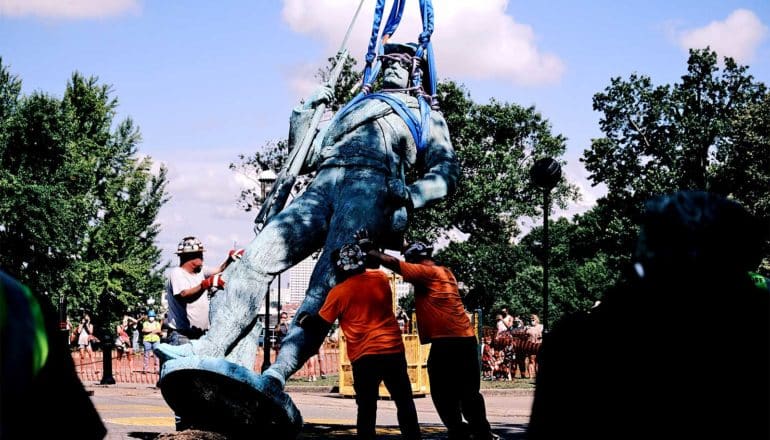
As Confederate monuments and memorials come down across the United States, it’s important to think historically not only about the past but also about our own time and what future generations might say about us, historian James T. Campbell argues.
With people across the United States confronting the nation’s legacy of slavery and systemic racism, monuments and memorials honoring the Confederacy have become political flashpoints. Some demand their removal as symbols of racial oppression and others warn of an attempt to “erase” history and heritage.
Most of these memorials—of which there are still well over a thousand scattered across the US, many in states that did not actually secede—were erected not in the immediate aftermath of the Civil War but in the years 1890 between 1915, according to Campbell, a professor of United States history at Stanford University.
This period, Campbell points out, was the same era that saw the violent restoration of white supremacy in the South, disfranchisement of Black voters, legal segregation, and a dramatic surge in lynchings.
“Understanding that historical context makes it a lot harder to claim that these monuments and memorials are simply ‘heritage,’ innocent of any racial meaning,” Campbell says.
Here, Campbell discusses the historical context in which these Confederate monuments were created and how they have become proxies in debates about racial injustice and anti-Black racism today:
The post Expert: Confederate monument facts defang ‘heritage’ claims appeared first on Futurity.
from Futurity https://ift.tt/3fFGYdQ
No comments:
Post a Comment